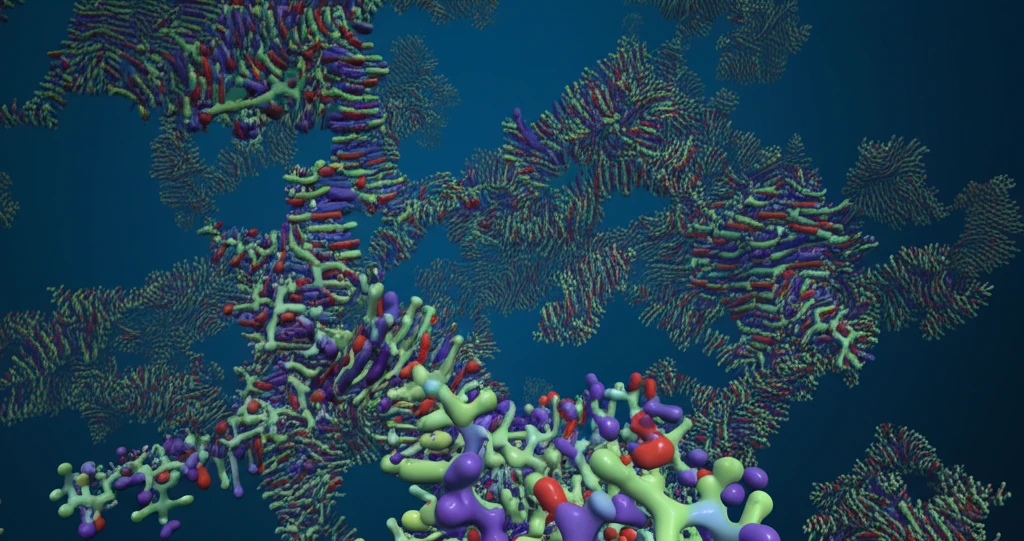
Decoding Peptoids: A Beginner's Guide to the Future of Biomaterials
"Unlock the secrets of peptoids, the innovative biomimetic polymers revolutionizing medicine and materials science."
In the ever-evolving landscape of materials science, a new class of molecules is emerging with the potential to reshape industries ranging from medicine to manufacturing: peptoids. These fascinating compounds, often described as peptidomimetics, are capturing the imagination of scientists and researchers due to their unique properties and versatility.
Imagine a material that can be tailored to mimic the functions of natural proteins but with enhanced stability and design flexibility. That's the promise of peptoids. Unlike peptides, which are chains of amino acids linked by peptide bonds, peptoids feature side chains attached to the nitrogen atom of the amino acid backbone. This seemingly small change results in significant differences in their structure, behavior, and potential applications.
This guide will walk you through the fundamentals of peptoids, explore their key characteristics, and highlight why they're becoming a focal point for innovation. Whether you're a student, a seasoned scientist, or simply curious about the future of biomaterials, understanding peptoids is becoming increasingly essential.
What Makes Peptoids Special?

At their core, peptoids are synthetic polymers composed of N-substituted glycine units. This seemingly subtle modification, where the side chains are connected to the nitrogen atom instead of the alpha-carbon, offers several advantages over traditional peptides. Peptoids exhibit enhanced resistance to enzymatic degradation, making them more stable in biological environments. Their synthesis is also often more straightforward, allowing for greater control over their structure and properties.
- Drug Delivery Systems: Peptoids can be engineered to encapsulate and deliver drugs directly to target cells.
- Biomaterials: Their biocompatibility makes them ideal for creating scaffolds for tissue engineering.
- Catalysis: Peptoids can be designed to mimic enzyme active sites, catalyzing specific chemical reactions.
- Antimicrobial Agents: Certain peptoids exhibit potent antimicrobial activity, offering a new approach to combatting drug-resistant bacteria.
The Future is Peptoid
As research into peptoids continues to expand, we can expect to see even more innovative applications emerge. From revolutionizing medicine to creating sustainable materials, these versatile molecules hold immense promise for addressing some of the world's most pressing challenges. Keep an eye on this exciting field – the future of biomaterials may very well be peptoid.
